Lightning Ground System
Back in the mid eighties, my last boat was hit by a lightning strike thru the shore power wiring, while docked/ NOT the mast, but somewhere in town... and it traveled to us. It blew a hole in my A.C. panel an inch in diameter as the arc passed through our dock wiring to the engine block........trying to exit the boat to the water. Along with this damage, it wiped out all my electronics; a Trimble Loran, Magnavox Sat-Nav, and smaller instruments. I decided to learn what I could do for the future, as I could not afford this damage and was not going to leave boating. The future, my future in boating, demanded answers I did not have .
.
I read what was available in those days from magazines and a few books I was able to find, but nothing was written in concrete-so they say-much of it was theories.
My gal Dorothy proudly modeling our new installation.
That boat was later sold and my CSY Pilothouse was purchased. I still did not have all the answers I needed. In January 1995, things changed a bit. The First "Sail Expo" was going to take place in Atlantic City, N.J. and seminars were offered in many pertinent subjects. A few I remember well, were one with Larry and Lin Pardey, another by West Systems explaining their epoxy systems and barrier coating for the osmotic blistering that was so prevalent then, and another that specifically addressed my lack of answers on the subject of 'Lightning strikes on boats'.

Mast Base has holes for masthead wiring and spreaderlights as well as tapped holes for attaching lightning ground wires that lead to external plate below.
The gent speaking on lightning stated that his company had been strongly involved with researching lightning strikes and related data for NASA, prior to some of the construction at Cape Canaveral. NASA was concerned to the point that they too, needed answers they did not have. This private company developed the early bottle brush, or gun-barrel cleaning tool type device we first had in the 80's for dissipating electrons or ions.
The basic theory as I understood it was for this device to help the flow of ions equalize between those in the air and clouds above and the boat and water below. Whether positive or negatively charged, the ionic mass could find a better path for flow, if the fine points of the brush were atop the boat or mast(highest point is preferable). Since electricity dissipates faster off a sharp point rather than a flat surface. Their tests showed that a brush up high, and a good ground, would improve the chances of NO strike. If there is no differential between cloud and surface, then no lightning!
Access through the sole was developed over the years, by careful planning and execution. See 'Refinishing the Sole' for more info.
The discussion of course got into the grounding system and a "Lightning Ground" System for boats...this WAS a Sail Boat Show! . The speaker, recommended:
-At least one square foot of copper under the boat as the ground. IT could be in the form of a 12" x 12" square plate or any shape including a 2" x 72" strap of copper. Of course it could be larger. He stressed, just as he had for the above the mast brush, that a fine point helps the discharge or electron flow. Sharp corners or edges give the needed fine point for electrical discharge in the underwater plate; same theory above and below the water. Since the concept of NO, or as FEW bends in the discharge path for the lightning is desirable, I decided to use a plate of 4" x 32" to get my surface area directly under the keel, rather than a long strip of many more feet and only an inch or two wide.
-The plate should be as close as possible to being directly under the main mast or brush system. Heavy wiring or cables should be attached between the base of the mast and the bolts connecting the mast base and underwater plate. This is because once the electrons want to flow in serious numbers, they will not want to make a turn. Straight line flow from top of mast to water below is best.
I installed the system as he sugg ested. Forespar Disipator brush atop the main mast and a copper 4" x 30" x .75" plate/machined with 45 degree sides to prohibit snagging underwater lines or weeds, and 4 grooves cut .25" deep and wide. Eight .375" silicon bronze bolts, ordered from Jamestown Supply were used for attaching the plate to the hull.
ested. Forespar Disipator brush atop the main mast and a copper 4" x 30" x .75" plate/machined with 45 degree sides to prohibit snagging underwater lines or weeds, and 4 grooves cut .25" deep and wide. Eight .375" silicon bronze bolts, ordered from Jamestown Supply were used for attaching the plate to the hull.
Other smaller copper plates .375" x 2" x 8" were used for and aft to tie in #6 ground wires from the rigging, through these bus bars, to the main lightning ground. Note, that Steve Silverman(Ft. Lauderdale) had these nickle plated for me!
-Inside the boat, the mast base was drilled and tapped for fasteners to hold the #6 grounding wires and #1 cable to the inside of several of the silicon bronze bolts.



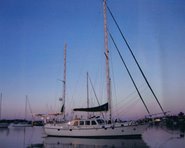
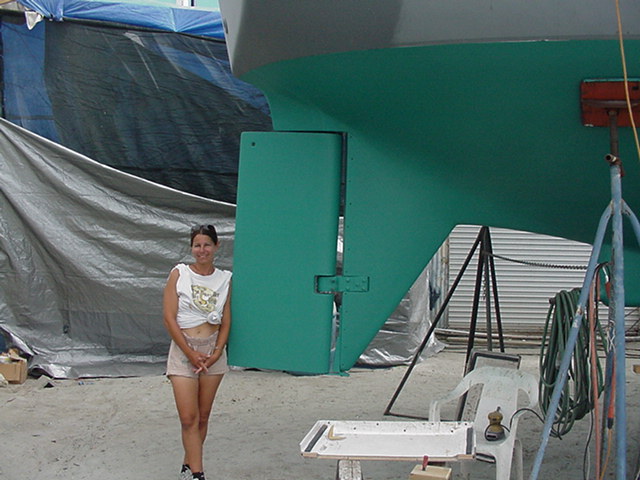
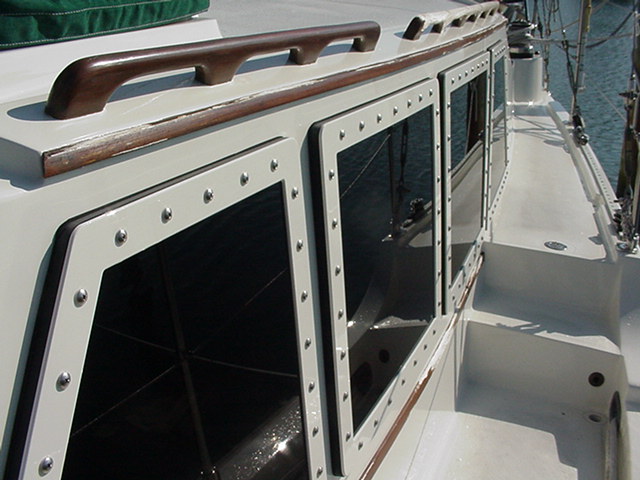
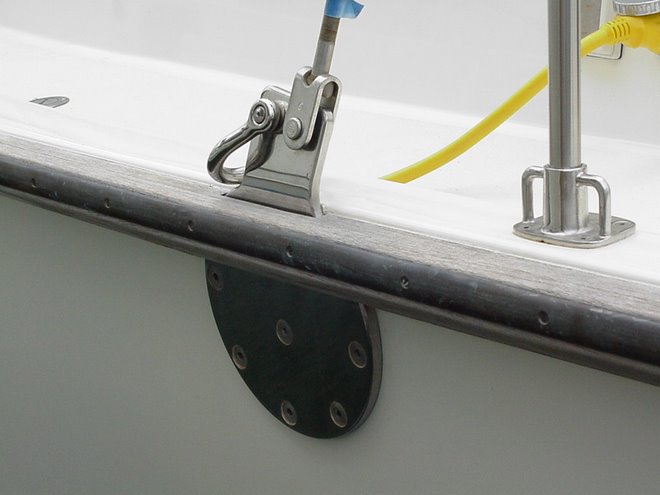
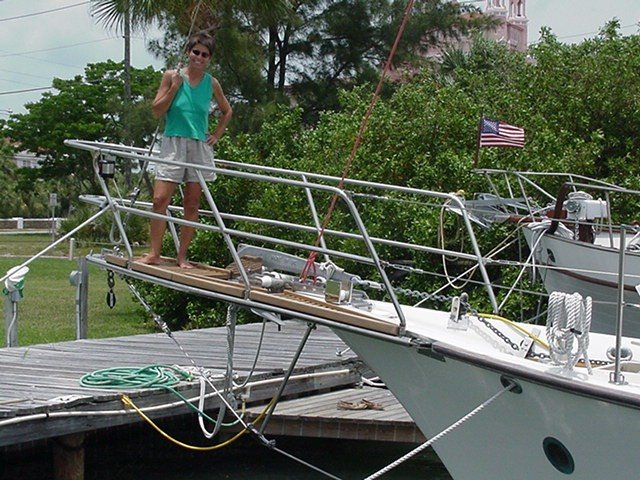
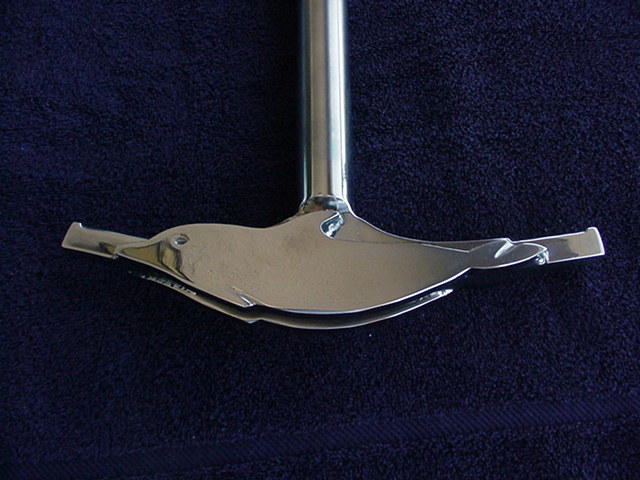
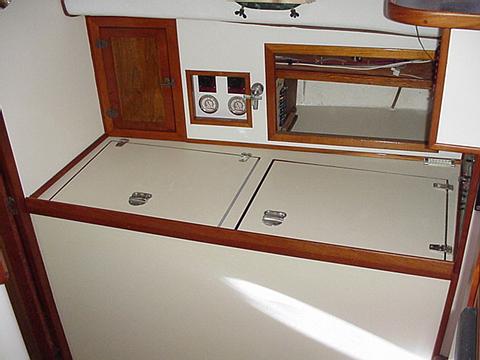
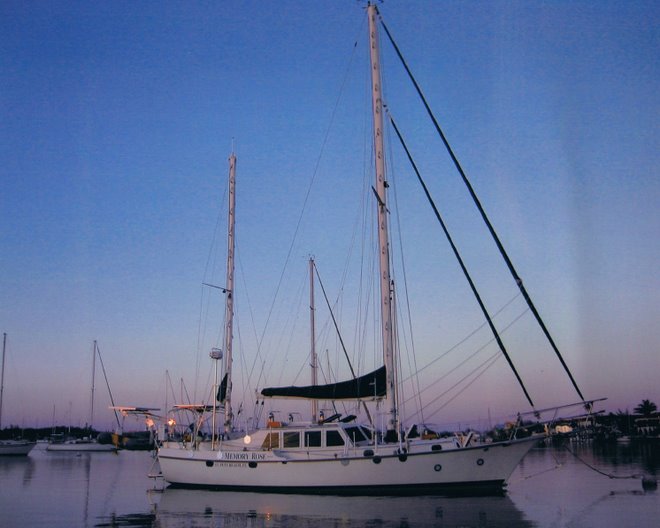
No comments:
Post a Comment